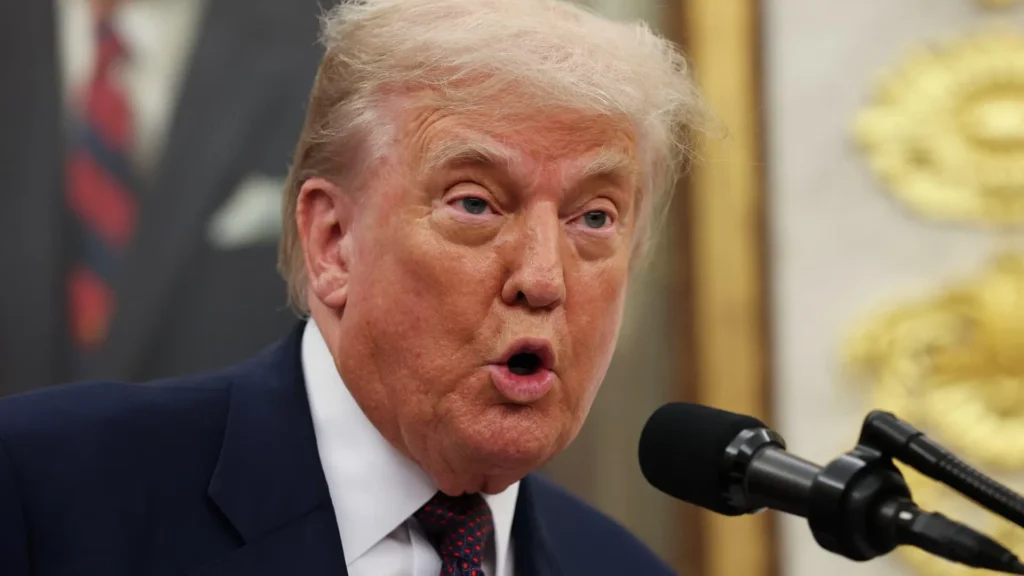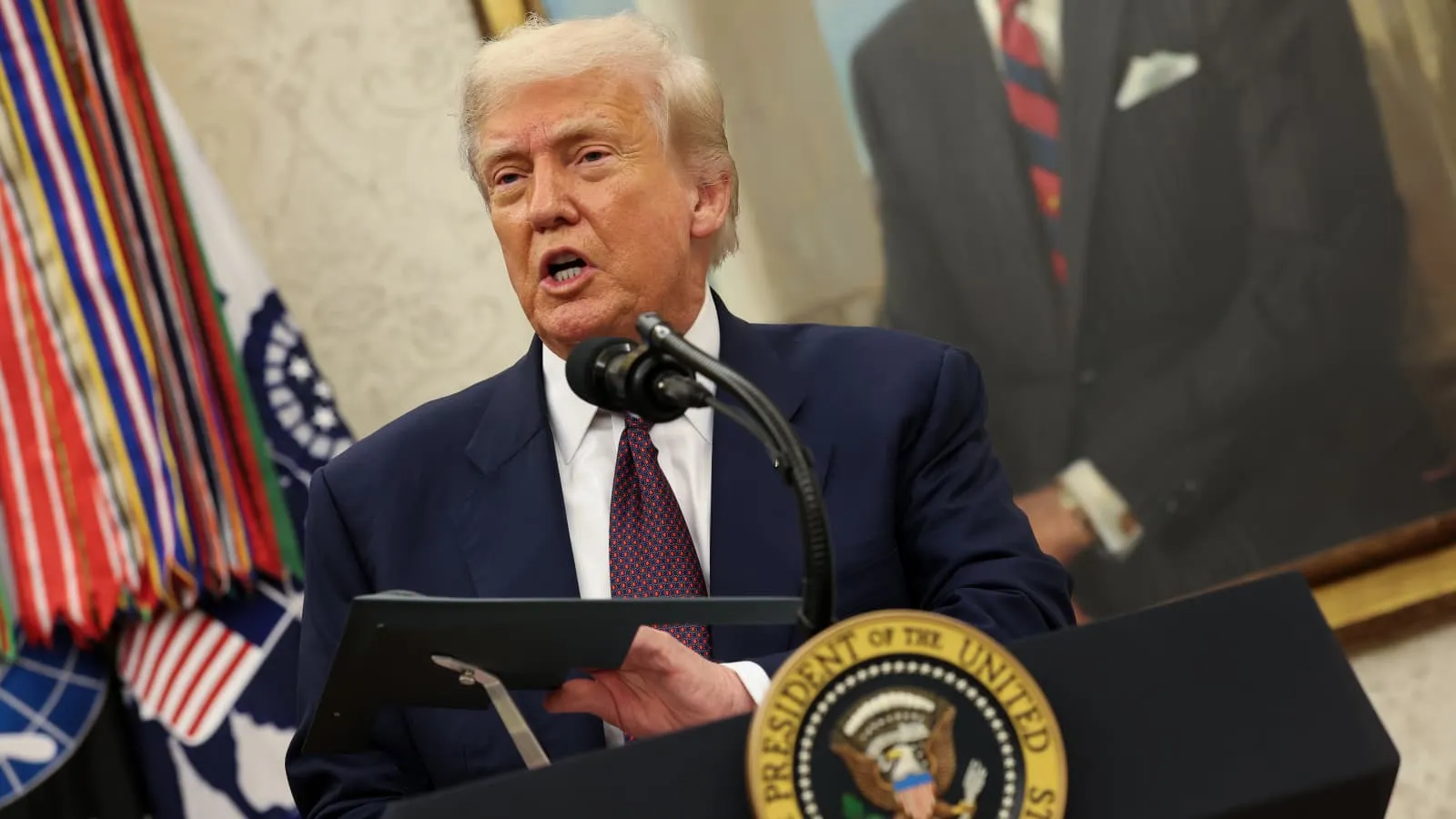In a bold move aimed at reshaping America’s dependence on foreign semiconductor technology, Donald Trump has vowed to impose a 100% tariff on most imported computer chips if he returns to the White House in 2025. The proposed tariff comes as part of a broader strategy to protect and bolster domestic chip manufacturing, particularly in the face of escalating tensions with China.
This announcement has sent ripples through global markets, ignited debate within the tech industry, and raised concerns about consumer pricing, supply chain disruptions, and America’s long-term competitiveness in the semiconductor sector.
Why the Focus on Computer Chips?
Semiconductors, or microchips, are the backbone of modern electronics — powering everything from smartphones and laptops to vehicles and advanced defense systems. The pandemic underscored how fragile the global chip supply chain is, with production bottlenecks in Asia causing delays across multiple industries.
Currently, a significant share of chips used in the U.S. is manufactured overseas, particularly in Taiwan, South Korea, and increasingly, China. While the Biden administration’s CHIPS and Science Act has already allocated billions to revive U.S. chip production, Trump’s proposal pushes the agenda even further by penalizing chip imports with a 100% tariff.
Trump’s Statement and Policy Direction
During a recent rally and in follow-up interviews, Trump asserted:
“We’re not going to rely on China or any other country for the brains of our technology. If they want to sell us chips, they’ll pay — 100% tariff. We’ll make them here in America. Every chip, every circuit.”
This marks one of Trump’s most aggressive trade stances yet, suggesting a resurrection — and escalation — of the trade war that defined his first term. While aimed mainly at China, the tariff policy could affect chipmakers from countries like Taiwan and South Korea, unless specific exemptions are introduced.

Economic and Industry Impacts
1. Short-Term Price Increases
Economists and tech companies warn that tariffs on imported chips could cause an immediate spike in prices for consumer electronics and industrial equipment. With many U.S. firms still dependent on global semiconductor supply chains, these added costs may be passed on to consumers.
2. Boost for U.S. Manufacturing
On the flip side, U.S.-based chipmakers like Intel, GlobalFoundries, and Micron could benefit, as the tariff would make domestically produced chips more competitive. It may also accelerate the return of semiconductor jobs to American soil — a win that Trump is likely banking on politically.
3. Supply Chain Disruptions
A sudden tariff implementation could disrupt ongoing supply chains, potentially leading to production delays in automotive, aerospace, and defense sectors that heavily rely on precise chip sourcing.
4. Tensions with Allies
Experts also highlight that tariffs could strain relations with allied nations like South Korea and Taiwan, who are major U.S. partners in chip technology. A blanket tariff may risk alienating friendly countries unless Trump introduces country-specific exemptions.
Strategic Motives Behind the Tariff Proposal
Trump’s proposed tariff is not just about economics — it’s rooted in national security and technological sovereignty. With growing concerns over China’s ambitions to dominate key tech sectors, the U.S. sees self-reliance in semiconductors as critical to maintaining global competitiveness and security.
By imposing such a hefty tariff, Trump aims to force American companies to source domestically or shift manufacturing operations back home. While this could take years and billions in investments, it aligns with the long-term vision of decoupling from Chinese technology.
Industry Reactions
Tech industry groups and business leaders have reacted with a mix of caution and concern.
- The Semiconductor Industry Association (SIA) warned that such a blanket tariff could have “unintended consequences on U.S. innovation and economic growth.”
- Apple, Dell, and other major tech companies are reportedly evaluating how such a tariff might affect their production costs and timelines.
- Intel has cautiously welcomed the potential for domestic market growth but emphasized the need for coordinated policy and infrastructure support.
Political Implications
Trump’s tariff pledge is clearly designed to appeal to the “America First” base, focusing on bringing back jobs, securing American technology, and reducing foreign dependence.
If elected, implementing this policy would likely require:
- Congressional support or executive orders,
- WTO (World Trade Organization) justifications,
- Trade negotiations with affected countries.
With President Biden also pushing domestic chip manufacturing, albeit through incentives rather than tariffs, the 2024 election may become a referendum on how best to secure America’s technological future.
FAQs:-
Q1: What does a 100% tariff mean for imported chips?
A 100% tariff means that the U.S. government would double the price of most imported chips by adding an additional tax equivalent to the product’s value. For example, if a chip costs $100 overseas, the importer would pay $200 to bring it into the U.S.
Q2: Will this tariff apply to all countries?
As of Trump’s initial statement, the tariff would apply to “most” imported chips, suggesting a broad application. However, specific exemptions may be made for allies like Taiwan or South Korea, depending on future negotiations.
Q3: How will it impact consumer electronics prices?
Expect short-term price increases in smartphones, laptops, gaming consoles, and even electric vehicles, as manufacturers pass on the higher import costs to consumers. However, over time, domestic production could stabilize prices if U.S. capacity expands.
Q4: Who benefits from this tariff?
U.S.-based chip manufacturers and workers stand to benefit from increased investment and reduced foreign competition. Additionally, this could incentivize tech companies to source more components domestically, strengthening American supply chains.
Q5: What are the risks of this policy?
Risks include:
- Inflationary pressure on consumer goods,
- Trade retaliation from affected countries,
- Supply chain disruption in tech-heavy industries,
- Political tensions with allies and trading partners.
Q6: How does this compare with Biden’s CHIPS Act?
While Biden’s CHIPS Act incentivizes domestic production with $52 billion in subsidies, Trump’s approach is punitive, seeking to deter imports through high tariffs. Both aim for U.S. semiconductor independence, but through different mechanisms.
Final Thoughts
Trump’s vow to impose a 100% tariff on imported chips is a high-stakes gamble with broad economic, political, and technological implications. Whether it leads to a semiconductor renaissance or triggers unintended disruptions depends on the details of implementation, international diplomacy, and the response from global tech leaders.
As the 2024 election draws near, the future of American tech policy — and the cost of your next smartphone — may hang in the balance.




